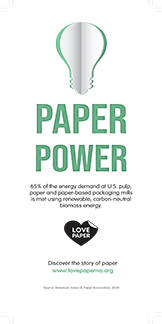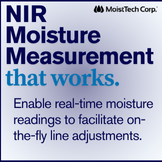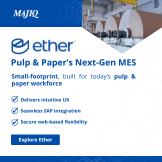Environmental, Social, and Governance (ESG) performance is increasingly measured by how well companies define and meet internal environmental targets. For the pulp, paper, and paper-based packaging sectors, setting clear and credible goals is no longer optional - it's essential. As climate disclosure rules tighten and stakeholder expectations rise, meaningful targets signal operational maturity and environmental leadership.
Goals, Objectives, and Targets - What's the Difference?
These terms often overlap in use but serve different purposes in sustainability planning:
-
Environmental Goals are broad, long-term aspirations (e.g., net-zero emissions by 2050).
-
Environmental Objectives are measurable milestones that support goals (e.g., reduce Scope 1 and 2 greenhouse gas (GHG) emissions by 30% by 2030).
-
Environmental Targets are specific, short-term actions that drive change (e.g., lower fleet CO₂ emissions by 5% annually).
This tiered approach turns strategic ambition into daily execution.
Building Strong Targets
1. Engage Cross-Functional Teams
Effective targets start with internal collaboration. Operations, supply chain, leadership, and sustainability teams must align on environmental priorities. This ensures feasibility, consistency, and ownership.
Example: In one case, quarterly planning meetings were held across departments to set and track targets aligned with corporate objectives, with each unit accountable for progress.
2. Set Science-Based and Globally Aligned Targets
High-quality targets are measurable, time-bound, and rooted in science. For climate-related efforts, aligning with the Science Based Targets initiative (SBTi) ensures consistency with the 1.5°C global warming limit.
Focus areas for pulp and paper companies may include:
-
Reducing energy and water consumption
-
Enhancing forest and biodiversity stewardship
-
Improving product carbon footprints
Environmental targets can also align with the United Nations Sustainable Development Goals (UN SDGs), enhancing stakeholder trust. Key SDGs for this sector include:
-
SDG 6: Clean Water and Sanitation - through efficient water use and treatment
-
SDG 7: Affordable and Clean Energy - by shifting to renewables
-
SDG 12: Responsible Consumption - via sustainable sourcing and circularity
-
SDG 13: Climate Action - by cutting GHGs
-
SDG 15: Life on Land - through responsible forest management
Company Example: UPM focuses on SDG goals 6, 7, 8 (Decent Work and Economic Growth), 12, 13 and 15. For example, they have committed to science-based GHG targets and sourcing all wood from sustainably managed forests. Sappi advances SDG 1 (No Poverty), 4 (Quality Education), 6, 7, 8 and 12.
3. Use Interim Checkpoints
Break long-term goals into manageable, near-term targets. These checkpoints allow for progress tracking, course corrections, and internal momentum.
Example:
-
Goal: Net-zero GHG emissions by 2050
-
Objective: 30% emissions cut by 2030 (baseline: 2020)
-
Target: Increase biomass energy use by 2027 to reduce fossil fuel use by 10%
-
Action Plan: Feasibility studies (Q1 2026), funding (Q2), installation (Q3+), and quarterly tracking
Embedding in Management Systems and Reporting
Strong targets are embedded in Environmental Management Systems (EMS) like ISO 14001, which require formalized objectives, tracking, and reviews.
Integration with third-party frameworks and tools enhances credibility and reporting transparency:
-
SBTi: Validates climate-science alignment
-
EcoVadis: Rewards measurable environmental progress
-
CDP (Carbon Disclosure Project): Prioritizes target-driven disclosure
-
EPDs (Environmental Product Declarations) and EPAT (Environmental Paper Assessment Tool): Help differentiate suppliers in environmentally conscious markets
Final Thought
Setting meaningful environmental targets is more than a box-checking exercise - it's a strategic move that builds trust and drives continuous improvement. When embedded in management systems and aligned with science-based frameworks and global goals, targets become a lever for long-term ESG success.





















